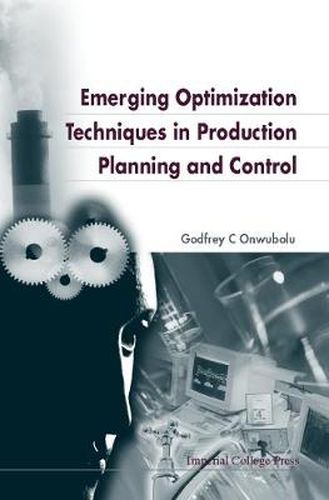Readings Newsletter
Become a Readings Member to make your shopping experience even easier.
Sign in or sign up for free!
You’re not far away from qualifying for FREE standard shipping within Australia
You’ve qualified for FREE standard shipping within Australia
The cart is loading…






This work proposes a concept of adaptive memory programming (AMP) for grouping a number of generic optimization techniques used in combinatorial problems. The same common features seen in the use of memory and a local search procedure drive these emerging optimization techniques, which include artificial neural networks, genetic algorithms, tabu search and ant systems. The primary motivation for AMP, therefore, is to group and unify all these techniques so as to enhance the computational capabilities that they offer for combinatorial problems encountered in real life in the area of production planning and control. The text describes the theoretical aspects of AMP together with relevant production planning and control applications. It also covers the techniques, applications and algorithms. The volume has been designed as an instructional text for students and those who are taking tuition on their own. The numerical examples given are first solved manually to enhance the reader’s understanding of the material, and that is followed by a description of the algorithms and computer results. The algorithms described for each application should be useful to both students and practitioners in grasping how to implement similar applications in computer code using emerging optimization techniques.
$9.00 standard shipping within Australia
FREE standard shipping within Australia for orders over $100.00
Express & International shipping calculated at checkout
This work proposes a concept of adaptive memory programming (AMP) for grouping a number of generic optimization techniques used in combinatorial problems. The same common features seen in the use of memory and a local search procedure drive these emerging optimization techniques, which include artificial neural networks, genetic algorithms, tabu search and ant systems. The primary motivation for AMP, therefore, is to group and unify all these techniques so as to enhance the computational capabilities that they offer for combinatorial problems encountered in real life in the area of production planning and control. The text describes the theoretical aspects of AMP together with relevant production planning and control applications. It also covers the techniques, applications and algorithms. The volume has been designed as an instructional text for students and those who are taking tuition on their own. The numerical examples given are first solved manually to enhance the reader’s understanding of the material, and that is followed by a description of the algorithms and computer results. The algorithms described for each application should be useful to both students and practitioners in grasping how to implement similar applications in computer code using emerging optimization techniques.